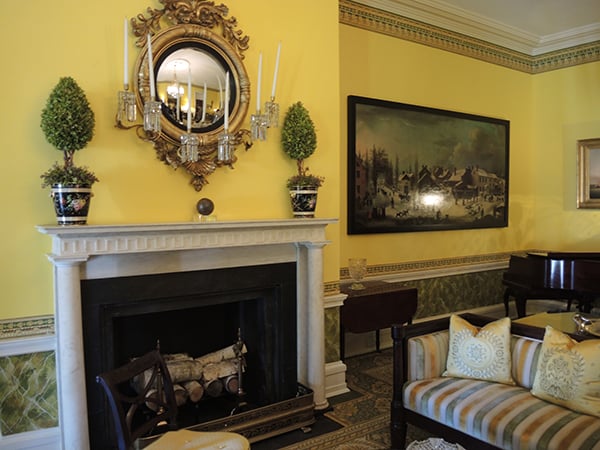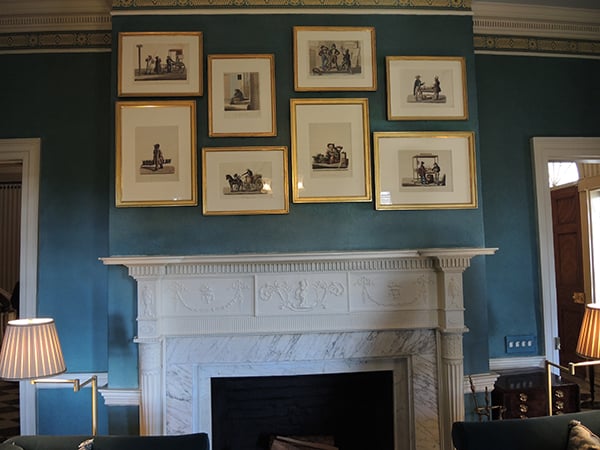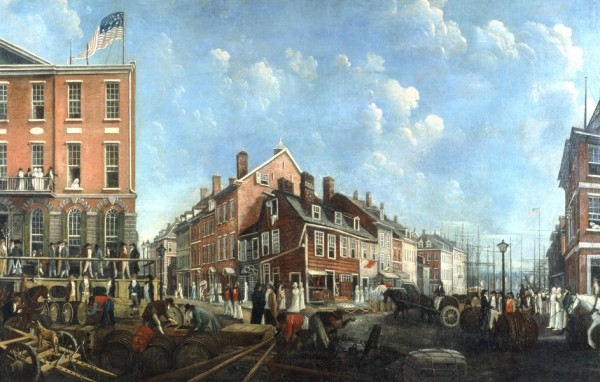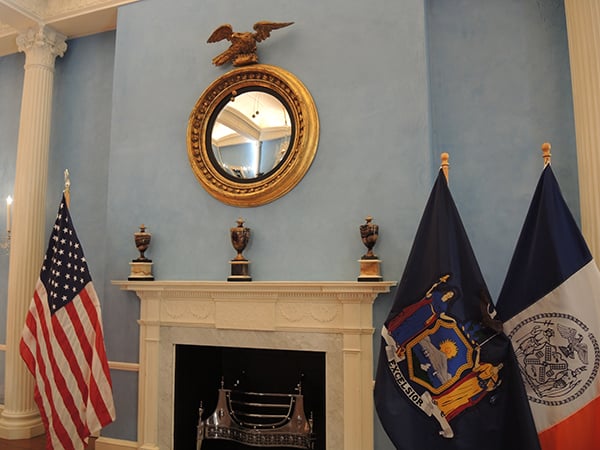Art & Exhibitions
Take a Peek at the New Gracie Mansion Exhibition
First Lady Chirlane McCray helped organize the show.

First Lady Chirlane McCray helped organize the show.

Sarah Cascone

What was life like for New Yorkers in 1799? A new art exhibition at Grace Mansion, soon to reopen for public tours for the first time since Mayor Bill de Blasio took office, looks to tell the story of the city’s formative years through art and historic documents.
“Windows on the City: Looking Out at Gracie’s New York,” is curated by Kalia Brooks, who only had eight months to put together the show—”the fastest I’ve ever worked in curating an exhibition,” she told artnet News at a press preview—with historical input from Paul Gunther, executive director of the Gracie Mansion Conservancy.
It was First Lady Chirlane McCray who wanted artwork that would tell the story of that diverse cultural, political, and racial make-up of the city back when Gracie Mansion was built in 1799. “The first lady was involved in every aspect of this installation,” said Gunther. “It was really her mandate.”
“When we look back, we are reminded that diversity is this city’s DNA. We flourish when we celebrate and encourage our bounty of difference,” explained McCray in a statement. “That’s the story this installation tells.”

Nicolino Calyo’s “Cries of New York” series on view in “Windows on the City: Looking Out at Gracie’s New York.”
Photo: Sarah Cascone.
“To find works that reflect the diversity was a wonderful surprise,” added Brooks, who normally works with contemporary art. In researching the exhibition, she realized that many of the hot button issues of 1799 remain all too relevant in the present day, such as “immigration [and] conditions of the working class.”
All in all, the show brings 49 new works to the mansion, which are on loan from various public collections. Another 15 works were taken down, many of which were either long-term loans that were due to be returned or 20th century decorative works. (Claims that a portrait of George Washington was evicted to make way for Frederick Douglass were mistaken, and a portrait of Susan Wagner, who lends her name to the mansion’s Wagner Wing, built in the 1960s, is undergoing cleaning and conversation and is scheduled to return.)

Francis Guy, Tontine Coffe House (Wall Street) (1797). Photo: Courtesy Gracie Mansion Conservancy.
The exhibition highlights the economic activity of a vibrant port city, such as the raucous street vendors, shouting about their wares. “The Cries of New York,” a suite of peddler portraits by Nicolino Calyo, is paired with modern recreations of these cries based on scholarly research. “New York was extremely cacophonous in this period,” said Gunther, noting that Gracie Mansion, built five miles north of the city limits with a stunning view of the East River, “was the Hamptons.”
Tontine Coffee House, a Francis Guy landscape painting, depicts the forerunner of the New York Stock Exchange, located just down the street from what was known as the “Meal Market.” Despite the innocuous name, this was the “second biggest slave market in America after Charleston, right at the foot of Wall Street,” explained Gunther.
The decline of slavery, however, is seen in a copy of New York’s Gradual Emancipation Act of 1799, which ensured that any children born of a slave would be freed upon entering adulthood.
“The discourse of freedom was on everyone’s mind; it was part of the zeitgeist of the moment,” said Brooks. Gunther compared the legislation to the Dream Act, which helps immigrant children receive citizenship, in that it creates a distinction between how different generations are treated by the government.

A room in Gracie Mansion.
Photo: Sarah Cascone.
The show also includes Native American artifacts on loan from the Smithsonian’s National Museum of the American Indian, such as a tomahawk and glass beads that were created by European settlers to trade with the Indians.
The works will remain on view through at least the end of 2016. The Conservancy has not finalized plans for 2017, which marks the 75th anniversary of the mansion’s life as the mayoral mansion.
A Gracie Mansion open house, set for this Sunday, October 25, is already sold out, but New Yorkers will get a second chance to stop in at a Halloween party on October 30 and October 31—provided they are accompanied by children between 5 and 10—and at 45 minute tours that begin November 10. Tickets are free of charge, and will be available online.